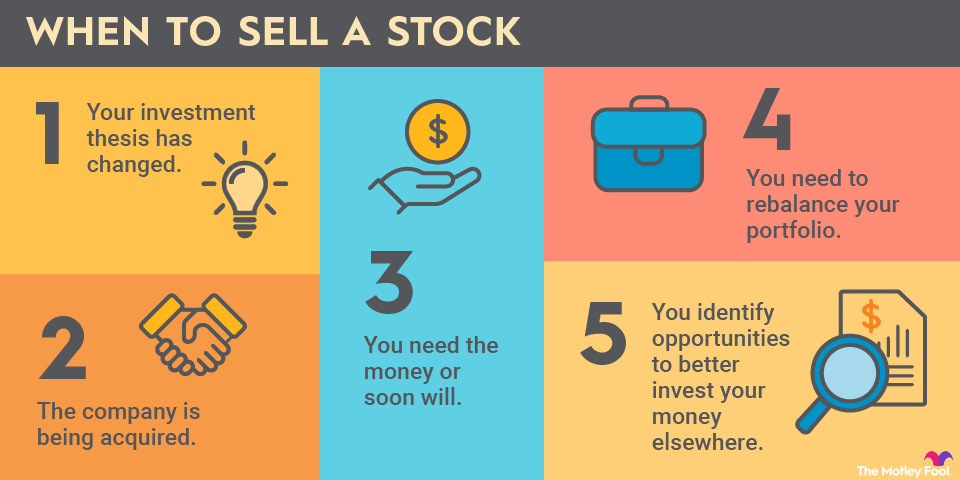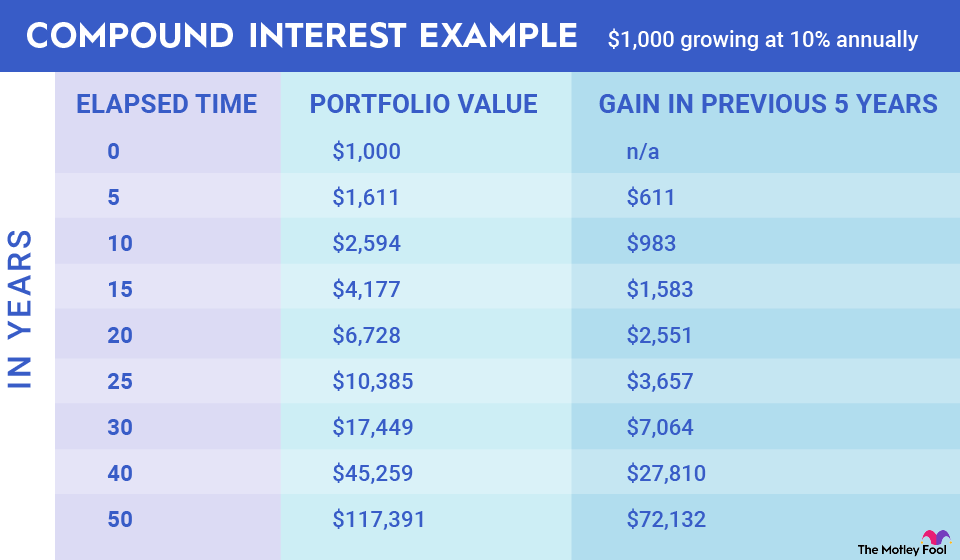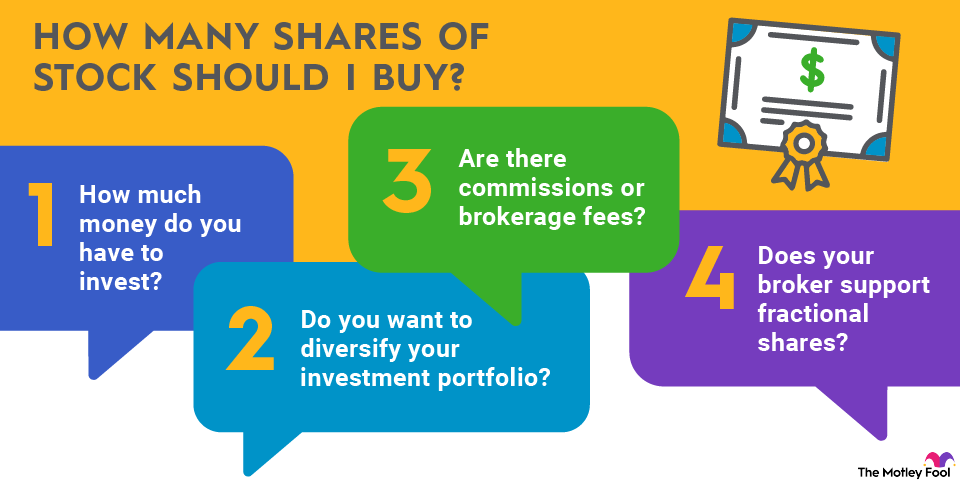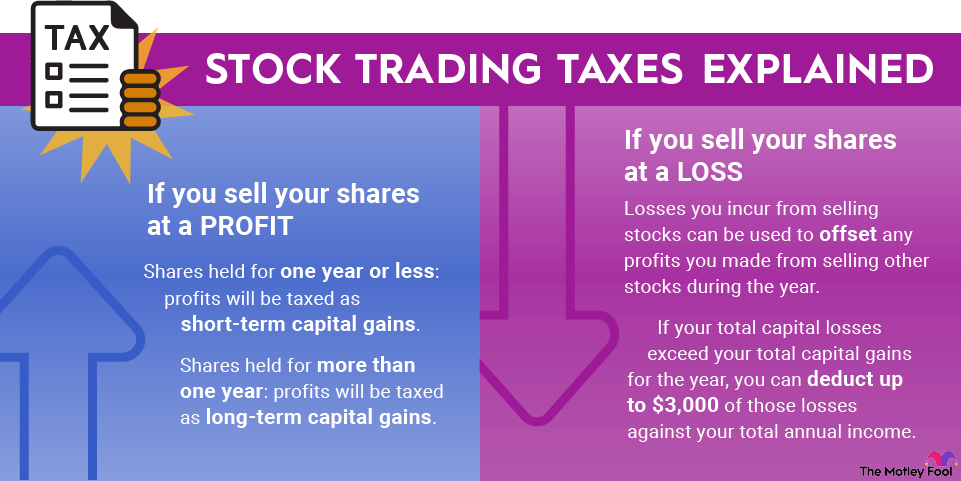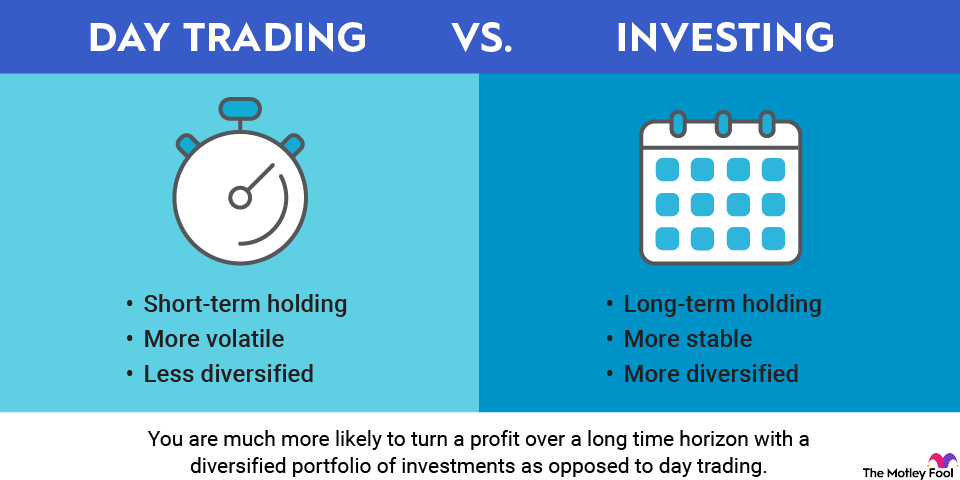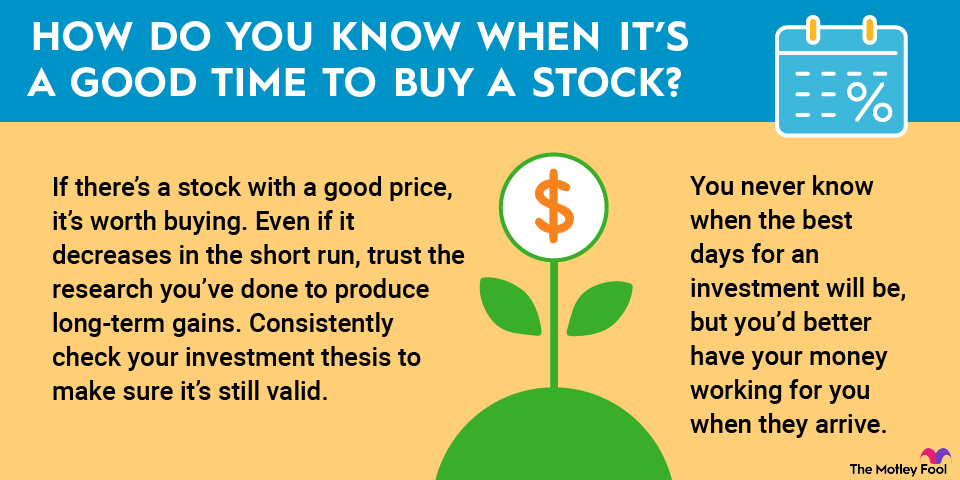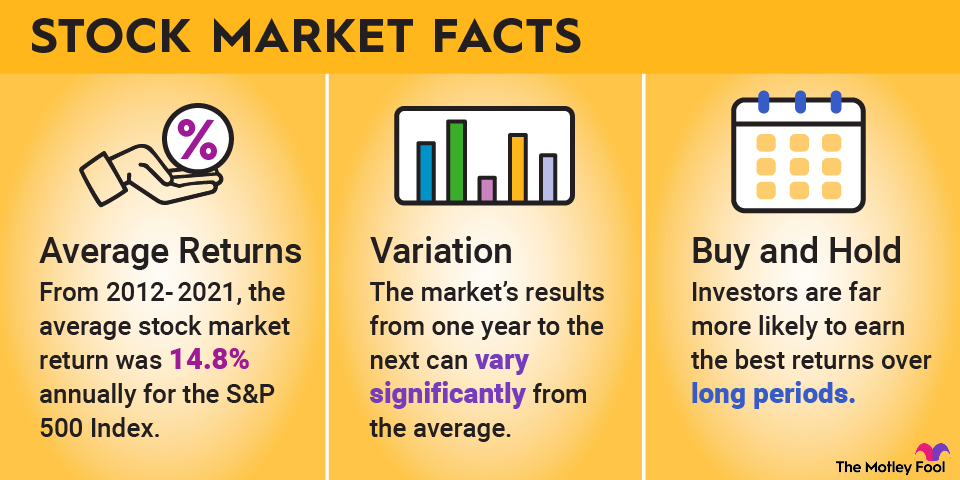There are a lot of ways to pick a stock. You could train a chimpanzee to throw darts at the financial section of a newspaper to select a random portfolio, and the chimp would beat Wall Street about half the time.
But if training chimps isn't really your thing or you simply can't find a newspaper, there are easier ways to pick stocks. And as an individual investor with a long time horizon for your stock purchases, you stand at an advantage over Wall Street's short-term focus.
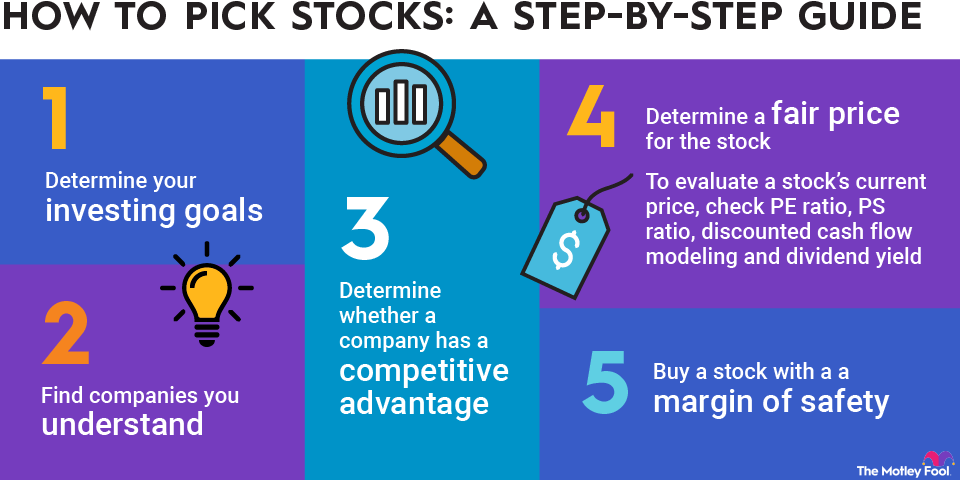
1. Determine your investing goals
Not every investor is looking to accomplish the same thing with their money. Young investors are likely more interested in increasing their portfolio as much as possible over a long time frame. Older investors are likely more interested in capital preservation as they near retirement age and plan to start living off their holdings. And some investors are most interested in generating regular income from their investments in the form of dividends and distributions.
Dividend Income
Take a minute to think about what your goals are with your investment portfolio. There are no rules. You can be in your 60s and looking to invest your portfolio for growth or in your 30s and looking for the stability of some extra investment income. Your goals will dictate which companies you'll look to buy.
- Investors interested in income will search for stocks with good dividend yields and the cash flow and earnings to support those dividends.
- Those looking for growth will be drawn to younger companies that show promising revenue growth but may not have as stable earnings.
- Investors interested in capital preservation will look for the opposite: stalwart businesses that have been around for decades while producing steady, predictable profits.
2. Find companies you understand
When you buy a stock, you become part owner of a business. If you don't understand the business, you're setting yourself up for failure.
Would you trust yourself to take full ownership of a company whose business you don't understand? Even if you appoint great management, how are you supposed to know whether they're doing a good job?
You can find companies anywhere. You use dozens of products and services every day, so take a moment to consider the companies behind them.
Also, consider companies that may indirectly affect you. Many businesses don't ever deal directly with consumers. When you check out at the supermarket, who makes those machines that take your payment? When you buy your medicine at the pharmacy, who's actually making those drugs? What equipment are they using?
When you get your car fixed by a mechanic, where do they buy new parts, and who makes those spare parts? When the signal on your phone drops because there's no cell tower in sight, who's really responsible for building new towers, and who makes the equipment that goes on those towers?
You can use the companies you encounter daily as a jumping-off point to research various sectors and find competitors in each industry. If you don't fully understand how a business makes money, you need to either do some research or find a different company.
3. Determine whether a company has a competitive advantage
Now that you're considering a whole bunch of companies and their competitors, it's time to start narrowing down the list. The most important thing to look for in a company is a sustainable competitive advantage, or what Warren Buffett calls a moat.
"The key to investing is not assessing how much an industry is going to affect society, or how much it will grow, but rather determining the competitive advantage of any given company and, above all, the durability of that advantage," Buffett said in a 1999 interview with Fortune. "The products or services that have wide, sustainable moats around them are the ones that deliver rewards to investors."

A moat can come from several different sources. Learning about how factors such as scale, switching costs, unique brands, intellectual property, and the network effect can give a company a strong advantage over its competitors will help you identify them in the companies you're researching.
4. Determine a fair price for the stock
After narrowing the list of stocks you're considering to companies with a strong competitive advantage, it's time to start looking at stock prices. There are a lot of ways to evaluate a stock's current price and whether it presents a good value. Here are a few:
- Price-to-earnings ratio: The P/E ratio divides a company's share price by its earnings per share over the past year. Investors can find stocks trading for good prices when their P/E ratios fall below their historic average. This metric is best used by well-established companies producing steady profits and growth.
But there may be a good reason for a stock to trade at a higher P/E ratio than it has before. If earnings growth is expected to accelerate over the next few years, investors should be willing to pay more per dollar of profits today. Remember, stock prices are determined by future expectations. The past can only be used as a rough guide. - Price-to-sales ratio (P/S): The P/S ratio is more useful for growth stocks that are unprofitable or produce very unstable earnings. Again, historical averages can be a good guide, but be sure to factor in future expectations.
Importantly, not all sales are created equal. A company may come out with a new product or service that produces a much different profit margin than its core business but accounts for the majority of its revenue growth. As a result, investors need to adjust their expectations for how the stock should price relative to future sales.
- Discounted cash flow modeling: If you really want to get into the weeds, dig into the financials of a business and start making projections for revenue growth, profit margin, and other expenses for the next several years. Then, use those projections for revenue and operating expenses to develop a model for future earnings.
Discount those cash flows by your required rate of return, and you'll have an estimate of the stock's value. Divide that by the number of shares outstanding, and you'll have a reasonable stock price. - Dividend yield: If you're focused on income, dividend yield is another important metric to consider. If a stock's dividend yield is above average, that could indicate it's trading at a good price. However, be sure you don't fall into a yield trap.
Sometimes, dividends are unsustainable, so be sure to verify how safe the dividend is based on a company's payout ratio as a percentage of earnings and free cash flow. And be sure to look forward and check that the earnings and cash flow are sustainable and growing. You may even develop your own dividend discount model by projecting dividend growth over the next several years.
5. Buy a stock with a margin of safety
The last step to stock picking is to buy companies trading for a fair price below your estimate. This is your margin of safety. In other words, if your valuation is wrong, you're preventing big losses by buying well below your fair price. That's another key to Warren Buffett's success as an investor.
You might not need a wide margin of safety for a stock with stable earnings and a strong outlook. Take 10% off your target price, and you'll probably be fine.
You may want a wider margin of safety for growth stocks with less predictable earnings. Aim for 15% to 30%, depending on how confident you are in your valuation. That ensures that if things don't go as expected -- for example, if a young company faces a new challenge or a larger company decides to enter the market -- you'll be protected because you bought your shares at a relative value.
Related investing topics
There's no need to get the absolute lowest price possible for a stock. Trust yourself that you did the research necessary to make a good decision, and when the price looks good, take it. If you follow the above steps and build a diversified portfolio of stock picks across several sectors, you'll be sure to find some winning investments.
FAQ
About the Author
The Motley Fool has a disclosure policy.



